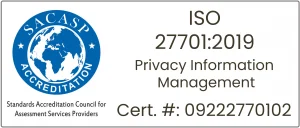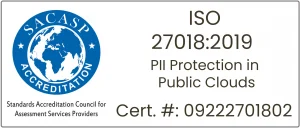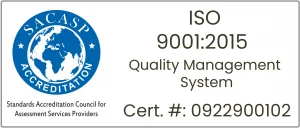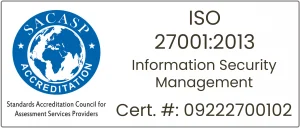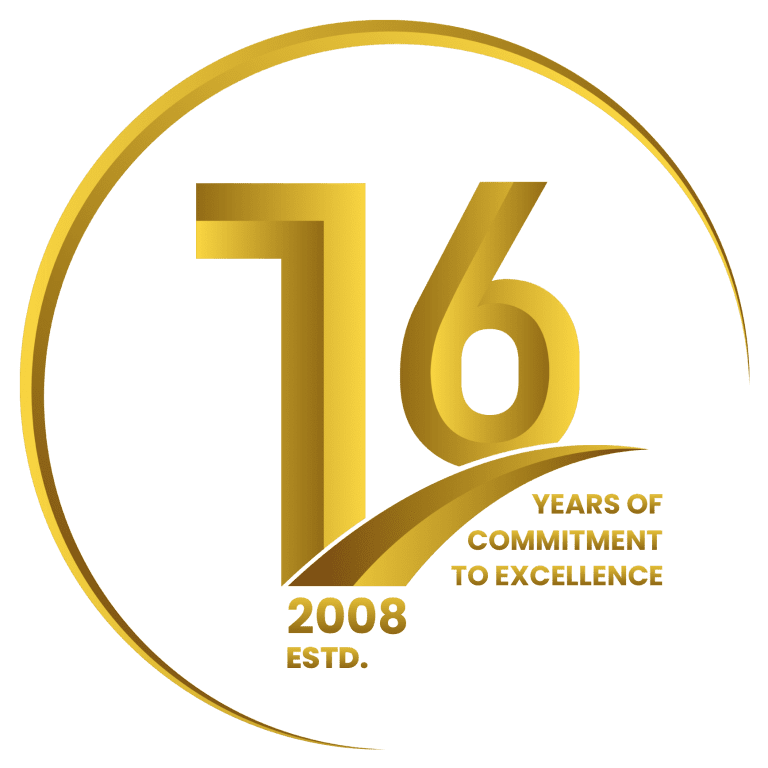Goods and services are constantly being traded between countries, leading to increased cross-border payments. Hence, currency conversion has a critical role in international trade as it transfers the purchasing power to the foreign currency with reference to the foreign exchange market.
What is Foreign Exchange?
The term “Foreign Exchange,” or “Forex,” refers to the process of exchanging currency of a nation (US Dollar) for the currency of another nation (UK Pound) at a predetermined exchange rate. Market dynamics of supply and demand regularly adjust the exchange rates for all currencies.
The U.S. dollar, Euro, British pound, Japanese yen, and Australian dollar are the most actively traded currencies internationally. The U.S. dollar prevails as the most dominant currency in global trade, contributing to more than 87% of the daily value of all cross-border payments.
The need for foreign exchange was initially motivated by traders who needed to make international payments for their business purposes.
How Do Exchange Rates Function?
Foreign exchange trading is, at its core, the same as exchanging currency when traveling internationally.
Trade between professional bankers, hedge fund managers, and corporate giants dominates the foreign exchange market. Foreign exchange (FX) trading can also involve speculating for profit or insuring against future exchange rate swings, as well as transferring funds from one country to another. If a foreign exchange trader expects the dollar’s value to rise, they might buy dollars by selling euros. Meanwhile, a European firm could keep dollars on hand as a form of insurance against the depreciation of the Euro.
There are two major approaches to establishing the value of a currency:
- A floating rate.
- A fixed rate.
Floating Rate
The open market determines a floating rate based on supply and demand in global currency exchanges. Therefore, if the currency is in high demand, its value will rise, whereas the currency values fall when demand is low. Fair exchange rates depend on technical and fundamental variables that affect currency supply and demand.
After the Bretton Woods system’s 1968–1973 breakdown, several major currencies floated freely.
Since supply and demand both play a role in determining exchange rates, most of them are ultimately set by the dynamic trading activity taking place on the global currency markets.
Floating rates are influenced by an array of factors across nations such as
- Interest rate shifts
- Unemployment statistics
- Inflation numbers
- GDP figures
- Manufacturing data
- Commodity prices
- Central bank policies
Fixed Rate
The government, acting through its central bank, determines a fixed or pegged rate. The rate is determined with respect to another major global currency like the US Dollar, Euro, or Japanese Yen). The government will intervene in the market by buying and selling its own currency against its peg currency to keep the exchange rate stable. Certain countries such as Panama, Qatar, and Saudi Arabia pegs their currency to the U.S. Dollar.
Different Ways for Trading Foreign Exchange
Foreign exchange can be traded in three primary ways such as
- Spot Market
- Forward Market
- Futures Market
Spot Market
In this principal FX market, exchange rates are set in real-time, depending on supply and demand, and the currency pairs are traded.
Forward Market
Here, instead of executing a trade right away, FX traders can also make a legally-binding (private) contract with another trader to fix the exchange rate for a certain amount of currency at a future date.
Futures Market
In the future market, traders select a standardized contract to purchase or sell a fixed amount of currency at an established exchange rate on a future date. Unlike the forward market, this takes place on a public exchange.
Motives for Foreign Currency Exchange
Customers of banks often need to transfer funds between their own foreign accounts or to the accounts of others living abroad. There are many reasons to do a currency exchange, including:
- Commercial transactions
- Sending money to loved ones abroad
- Covering the costs of maintaining an overseas property
- Making payment for your imports etc.
Different nations possess different currencies around the globe. To simplify the exchange of currencies across nations, the adoption of exchange rates is mandated to ensure that the amount sent and received internationally is exactly equal.
Customers can get prices for exchange rates and complete international money transfers at their convenience using their preferred online bank or currency exchange service.
Who is Involved in the FX Settlement & the Process?
There are several participants involved in the foreign exchange (FX) settlement process. A secure and equitable FX settlement is the goal of the entire procedure, which involves numerous moving parts, which is discussed below:
The Banks
In foreign currency exchange (FX), banks play the role of intermediaries to facilitate transactions between the buyer and seller. They oversee the fund transfers between the parties and ensure that the settlement occurs uninterrupted.
The Central Banks
The exchange rate of the currencies between two countries is determined by the Central Banks of those countries. Also, they keep track of the cash flow by maintaining the stability of the FX market.
The Clearing House
A clearing house is a third party that promotes cross border payments transactions between buyers and sellers of two different nations. A clearing house is a subsidiary or independent corporation of a futures exchange that handles financial transactions such as account settlement, trade clearing, margin collection and maintenance, delivery regulation, and trade data reporting.
A clearing house is an organization whose mission is to increase market efficiency and financial system stability.
Settlement Process
The FX settlement process involves several different steps, including verifying both parties’ commitments to the trade, then transferring the funds between accounts and finally the settlement date itself.
How to Do Foreign Currency Exchange?
Because of the dynamic nature of international financial markets, the exchange rate is not always exactly one-for-one when two currencies are exchanged.
The exchange rate is determined in real time based on market conditions when a cross-border payment is initiated. At that exchange rate, the customer’s payment is converted to the target currency.
Currency market fluctuations can have a significant impact on the final amount received compared to the original amount paid, making the FX rate a key factor in these situations.
Foreign exchange charges (FX fees) are incurred whenever a company enters a new international market and begins accepting payments in currencies other than its home currency or whenever individuals begin making purchases in currencies other than their own. Credit transfers (CTs), direct debit arrangements between accounts, and other payment methods are all subject to foreign exchange fees.
Also, the overall amount being transferred, the location of the recipient, and the remittance service provider or a bank are all likely to contribute to the FX fees associated with cross border money transfers.
Things to Consider
Depending on where they are located and the currencies being used for their transactions and settlements, businesses need to be mindful of several things, including
- The participants involved such as the merchant, bank, card network, or non-card payment mechanism like a digital wallet, and the brokers to prevent unnecessary costs.
- The settlement times and risk, as it is crucial to make sure that parties have adequate funds to support settlement when there is risk involved.
- A clear commercial agreement with the financial counterparty regarding currency conversion.
- Recognize the source of the benchmark or exchange rate against which these financial terms would be measured (such as a central bank rate, the Bloomberg rate at a given time, etc.).
- Delays due to regulatory obligations such as AML and KYC checks, among others.
This allows them to prioritize their FX strategy in a way that ensures traders achieve the highest possible rate for their foreign exchange needs while still receiving timely, low-risk transaction settlements.
Risks Associated with Foreign Exchange
Foreign exchange has the potential for making or losing money because of the changes in the value of one nation’s currency relative to another.
Those who are engaged in global commerce, multinational corporations, and anyone involved in cross-border payments are all susceptible to the risks associated with the changes in currency value.
There are three main categories of foreign exchange risks which are as follows.
- Transactional risk,
- Translational risk, and
- Economic risk
Transaction risk
When transactions are conducted in a currency that is different from the organization’s base currency, there is a likelihood that exchange rates may change in a negative direction between the date on which the transaction was conducted and the date on which it was settled. This risk derives from real and potential import and export transactions.
Translation risk
If a company operates a foreign subsidiary in a currency that is different from that of the parent company’s reporting currency, the items on the foreign subsidiary’s balance sheet must be to be converted into the reporting currency of the parent company using accounting standards for consolidating the balance sheets.
Variations in the consolidated financial revenue due to shifts in exchange rates are known as Translation Risk. Stock prices react to the results. Another name for this is “Accounting Risk.”
Economic Risk
This is a possibility that a shift in exchange rates could lead to a change in investor views on the company’s business and subsequent cash flows. Considering this, the value of the company on the market shifts. For instance, when imports become less expensive due to the reduced exchange rate, a monopolistic product of the corporation faces competition. Forecast Risk is another name for this aspect of trading abroad.
Challenges To Overcome
Cross-border transactions outside the Single European Payment Area (SEPA) involve foreign exchange, which can pose challenges to businesses.
Some challenges include
- Paying for unnecessary double conversions can result in companies paying more than they should.
- Poor counterparty knowledge can lead to extra costs, as it is essential to understand all parties involved in a transaction. Understanding the location of counterparties and their banks can also help cut costs.
- Additionally, transacting across borders can involve complex settlement arrangements between banks and intermediaries, involving regulatory obligations and checks related to KYC (Know Your Customer), AML (Anti Money Laundering), and other issues.
Companies, banks, and payment providers should seek to understand these challenges and optimize their approach to cross-border payments.
How to Improve Cross-Border Payments?
Key factors for businesses to improve the settlement process in cross-border payments include the following
- Businesses undertaking cross-border payments should seek an open and straightforward approach by understanding who is involved in the process and avoiding redundant conversions.
- Companies should also choose partners with short chains to avoid unnecessary intermediaries between buyer and seller and reduce the risks and costs associated with FX.
- Integration of cloud-based services and modern, efficient APIs into payment businesses or bank systems results in faster and more efficient FX and cross-border payments because they can be processed much faster than if hosted in-house.
- For businesses, especially those handling higher-value payments, it is essential to learn about the infrastructure that drives settlement and clearing operations. This minimizes the chances of regulatory violations, including inadequate money for clearing and settlement.
- Businesses should also be cognizant of the time costs associated with complying with regulations and the potential ripple effects of longer settlement timeframes.
- Working with a payments provider who has access to a lot of liquidity and stable market circumstances will help you offer competitive rates for foreign exchange transactions.
- Businesses should also ensure sufficient funds for both them and their intermediaries to cover potential risks caused by slower settlement times.
Future of Cross Border Payments and FX
Businesses, banks, and NBFIs can expect to see greater competition in FX services and cross-border payments in the future. Higher-value and higher-volume corporate customers will see value-based offerings based on foreign exchange volume and business volumes.
Open banking, enabled by the EU’s PSD2, will lead to faster FX and cross-border transactions. However, these services will not reduce exposure to high FX fees and charges.
Blockchain-based payments have gained hype, but challenges remain, particularly with cryptocurrencies. The volatility of cryptocurrencies may make intermediaries reluctant to participate, and interfacing between fiat currencies and crypto remains complicated. The lack of “trusted party” status in many cross-border transaction scenarios could also block instant payments.
The advent of stablecoins like USD Coin is beginning to enable blockchain-based transactions, but businesses should focus on optimizing existing FX and cross-border payment arrangements until a secure and stable blockchain solution is widely available and accepted.
Questions remain over how to regulate these new payment methods and the effectiveness of instant settlement payments, especially with higher-value transactions subject to AML and KYC checks.
NetRemit
Our NetRemit is an advanced Cross-Border Payment Platform for Banks, Neo banks, Forex, MTOs, Retail Chains, and FinTech to facilitate international money transfers.
NetRemit offers you the opportunity to integrate all the major 3rd party applications in the market to fulfill all your demands associated with cross-border payments, beginning from Know Your Customer checks to payment gateways, and from FX to settlement, thereby streamlining the payment process and strengthening the security.
Macro Global along with its solution partners works together to provide an all-encompassing solution ie Remittance as a Service (RaaS) through our product NetRemit, from legacy migration to compliance to AML and KYC to payout.
As this platform promotes your attention on the business, you can boost your commission and foreign exchange revenues notably. There are also significant possibilities for expanding those revenues over time.
Plug and play our ready-to-use partner systems to have a quick, cost-effective, accurate, and seamless payment experience in a brief period of time.
Related Posts
Revolutionising Remittance: How NetRemit’s Promotion Management Drives Loyalty and Growth
NetRemit empowers remittance businesses to boost growth and build lasting customer loyalty through seamless promotion management. Know how!
How Smaller Money Transfer Operators Can Thrive in International Remittance Landscape
Explore smart strategies and tech-driven solutions for small MTOs to establish leadership and dominate the competitive international remittance market.
Powering the Gig Economy with Instant Cross-Border Payments
See why instant cross-border payments are essential for the gig economy, eliminating delays, high fees, and inefficiencies while boosting global workforce efficiency.

